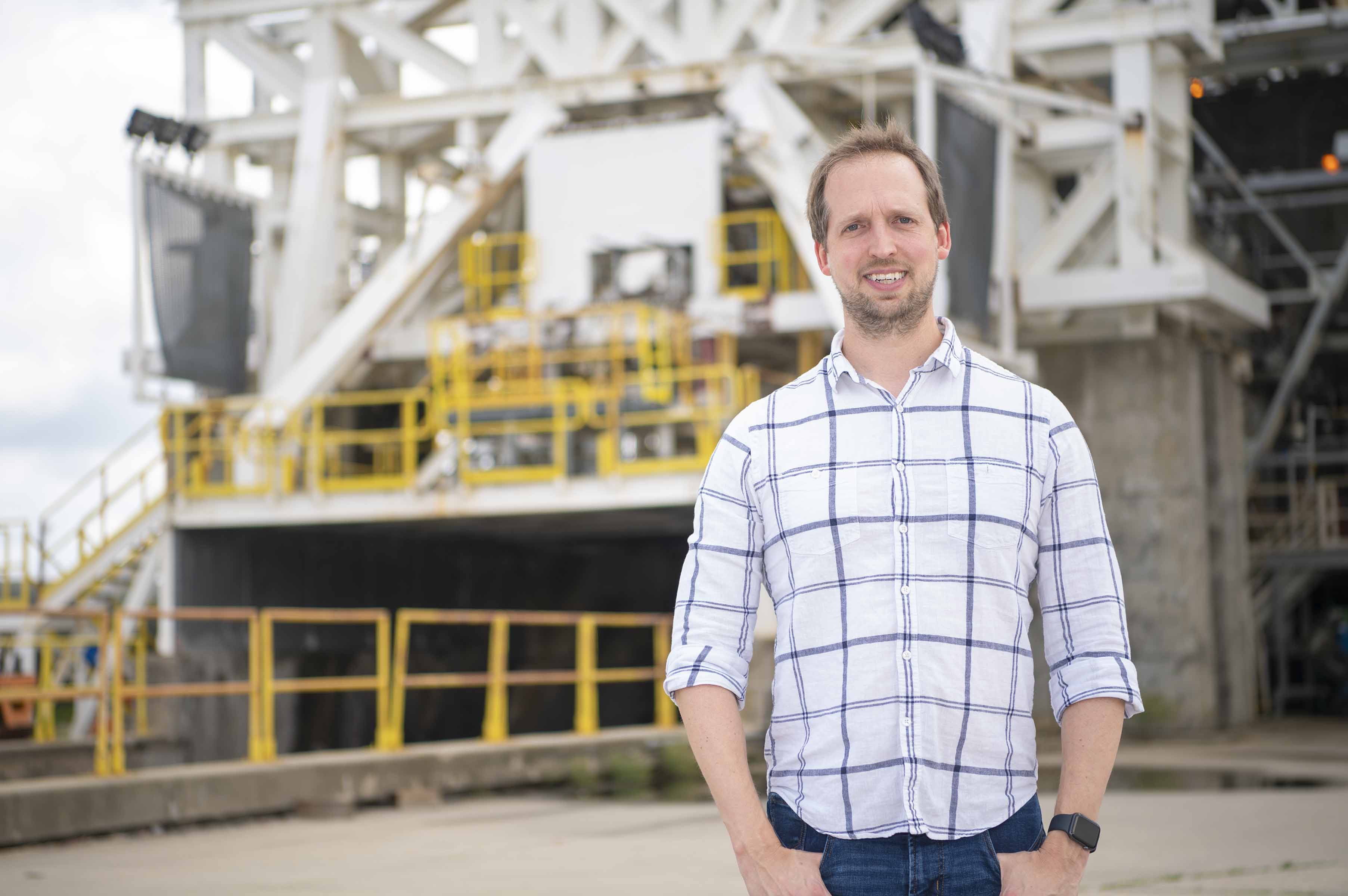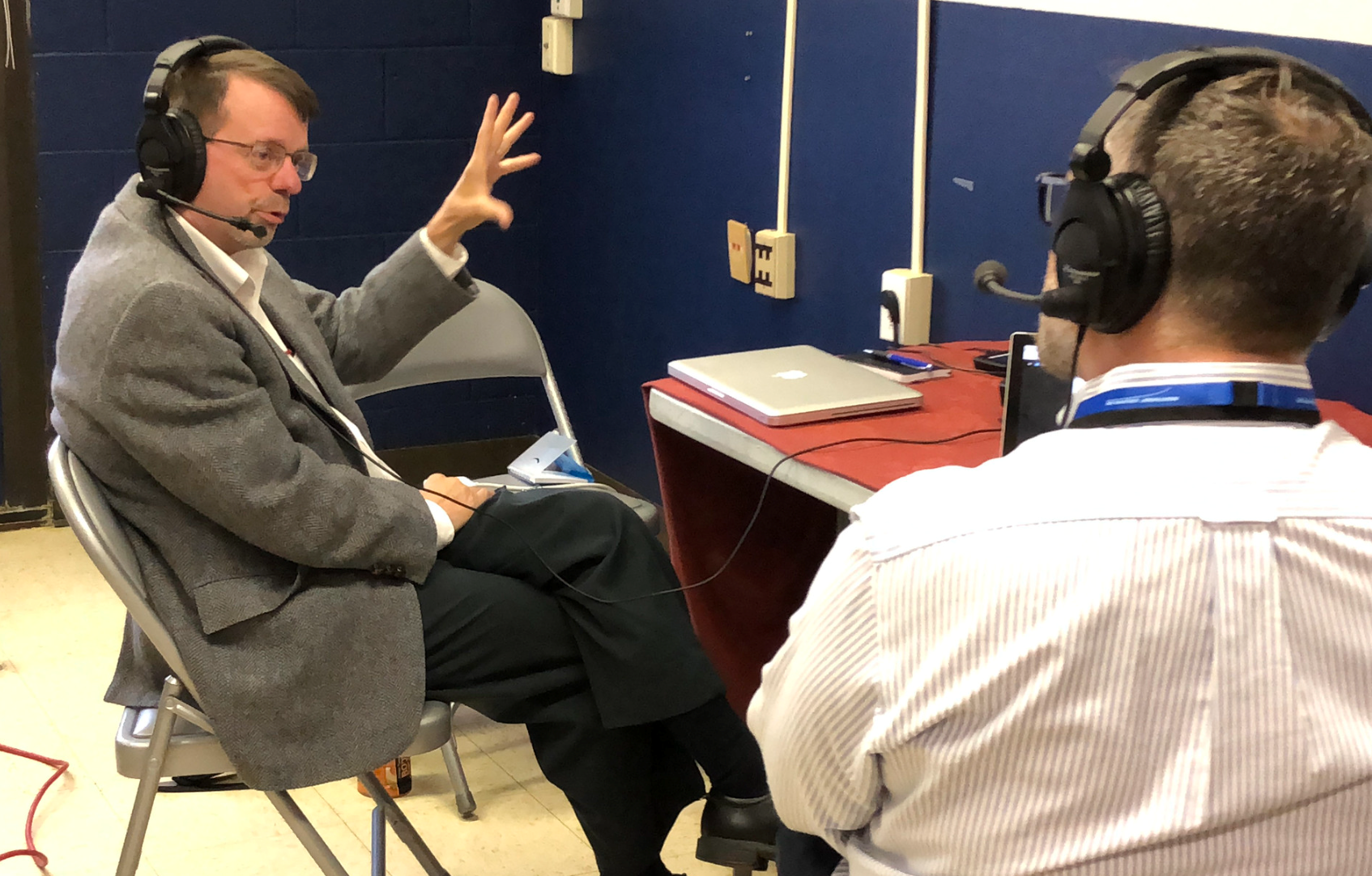How a NASA Engineer Supports the Commercialization of Space
Chris Barnett-Woods’ favorite movie growing up – Back to the Future – led him to dream of one day building a DeLorean automobile. Instead, the electrical engineer is doing something never imagined as he helps NASA support the commercialization of space for the benefit of all. “If there is any interest, always apply to work […]

Chris Barnett-Woods’ favorite movie growing up – Back to the Future – led him to dream of one day building a DeLorean automobile. Instead, the electrical engineer is doing something never imagined as he helps NASA support the commercialization of space for the benefit of all.
“If there is any interest, always apply to work at a place like NASA because you never know where it will take you,” said Barnett-Woods, who is approaching two decades of work at NASA’s Stennis Space Center near Bay St. Louis, Mississippi. “In college, I never thought I would work for NASA. I thought it was a far-off fantasy and could not be a reality. Turns out, it was closer than I thought.”
The Diamondhead, Mississippi, resident is in his 10th year as a NASA engineer and 17th overall at NASA Stennis, following seven years as a contractor before joining NASA.
Barnett-Woods is the electrical lead and instrumentation engineer at the E-1 Test Stand. It has four test cell positions and is a part of the versatile four-stand E Test Complex at NASA Stennis. Overall, the complex includes 12 active test cell positions capable of various component, engine, and stage test activities.
He describes the customer-focused approach at E-1 as a fast-paced workflow in a constant phase of testing while always keeping safety at the forefront.
“Safety is priority number one, followed by collecting data to help our customers,” said Barnett-Woods. “We ensure everyone goes home in the condition they entered. There is no hesitation that if we are entering an unsafe process or configuration, we will stop right there and make sure we are doing it the right way.”
A typical day for the engineer includes running a system calibration, which ensures all sensors on the facility and test article are reading accurately, followed by red line checks.
The red line checks help maintain a safe work environment in the event a pressure or temperature goes too high. If that were to happen, this process will safely shut down the engine.
Once checks are complete, the hot fire test begins with flowing fuel and oxidizer through the test article to facilitate firing and record data. The data tells the story of performance and allows for design analysis as engineers determine the most optimal way to run the test article.
“It is a fun environment,” the NASA engineer said. “We have a lot of very dedicated people that know the job, love the job, and would do nearly anything for it. We are one big, happy team, like family.”
A hot fire can range between one second to 200 seconds, depending on what is tested. The 2023 NASA Silver Achievement Medal recipient has supported hundreds of hot fires for commercial customers, including companies brand new to the aerospace industry and those more experienced that are looking for specific parameters.
“NASA Stennis is a one-of-a-kind facility in the world,” Barnett-Woods said. “This is the only place where we can do a ground level test of an actual engine hot fire and if you like rockets, this is the place to be.”
For information about NASA’s Stennis Space Center, visit:
Stennis Space Center – NASA
What's Your Reaction?



















.jpg?#)































